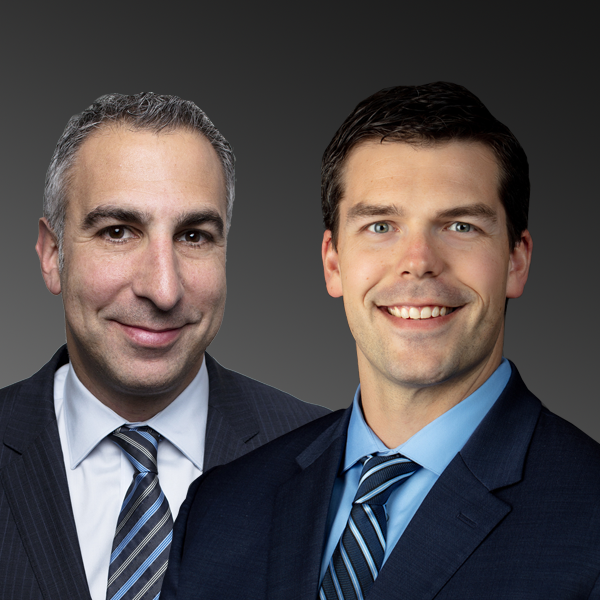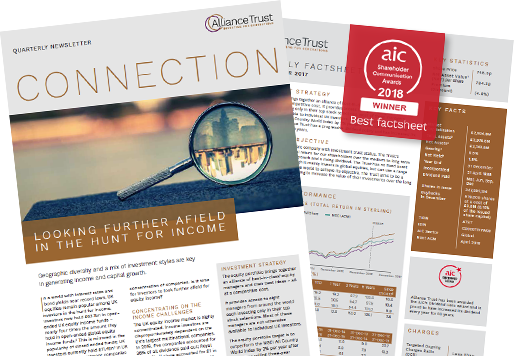Interactive Investor columnist explains why certain unglamorous investments can be the basis of a great portfolio.
This article was originally published on interactive investor on 04.05.21

Boring is a word you don’t really associate with investing, especially in these heady days when technology shares and racy growth stocks remain all the rage.
Yet I think every portfolio should have a hearty helping of boring. By that, I mean investments that tend to happily trundle along, delivering a little bit of capital and dividend growth along the way.
Yes, they occasionally fall in value when stock markets go into reverse, but most of the time they plod away, much to the satisfaction of shareholders and investors.
The best of these bores (premier cru bores) are to be found in the investment trust community – collective funds whose shares are listed on the London Stock Exchange. Come rain or sunshine, their shares can always be traded – bought or sold.
This is all rather reassuring in light of the long wait that tens of thousands of investors have had to endure, either getting their money out of closed property funds or receiving their final payments from the unsatisfactory break up of investment fund Woodford Equity Income.
For the record, these property funds and Woodford Equity Income are/were not stock market listed – and always depended upon ready access to cash to fend off any wave of redemption requests from investors.
Cash they simply did not have when investors came knocking on their doors wanting out.
The best of these bores (rest assured, I will name them soon) have certain defining characteristics. For a start, they’re globally invested, investing across developed and embryonic stock markets.
For investors, that means they get exposure to a geographically diversified portfolio of equities. Not just UK and US equities, but also shares listed in countries such as China, India and Russia.
Diversification is one of the golden rules of investing. These bores provide it by the bucket-load although they are equity-focused and not invested in multi-assets (bonds, property as well as equities). Not a bad thing given the parlous state of both the commercial property and bond markets.
Second, they tend to have been around for rather a long time – certainly longer than you and me have been treading this precious earth of ours.
Many of these investment vehicles have survived two world wars, the Great Depression and, more recently, have come through the pandemic relatively unscathed. They’re still chugging along. Indeed, the eldest of these bores has been around since 1868 and is still going strong.
Two other features that stand them apart from the investment madding crowd are their names and the charges they take for managing their investment portfolios.
Their names usually give little indication as to what they are striving to do on behalf of shareholders – and as far as charges are concerned they are some of the most competitive around in the collective funds universe. Only exchange-traded funds – index tracking funds run by computers – have lower ongoing costs.
So, who are these bores? They are to be found in the global sector of the investment trust industry and include the likes of Alliance Trust Ord ATST, Bankers Ord BNKR , Brunner Ord BUT , F&C Investment Trust Ord FCIT (153 years old), Mid Wynd International Inv Tr Ord MWY, Scottish Investment Trust Ord SCIN and Witan Ord WTAN. The ‘magnificently boring seven’.
The first five trusts are managed by Willis Towers Watson, Janus Henderson, Allianz, BMO and Artemis respectively. The latter two are currently self-managed.
Performance-wise, the five-year figures are respectable, ranging from 112% (Brunner) to 33% (Scottish). To put these numbers into perspective, over the same period, the FTSE World Index has generated a return of nearly 92%.
Only two of the bores – Witan and Scottish – have failed to outperform this index. In terms of total annual charges, they range from 0.5%(Bankers) to 0.78% (Witan).
Of course, these bores have not performed as well as other global funds – for example, the likes of Scottish Mortgage Ord SMT and Monks Ord MNKS - that have adopted a more adventurous investment approach, investing in some of the globe’s biggest technology stocks.
The likes of Tesla Inc TSLA, Amazon.com Inc AMZN and Microsoft Corp MSFT. In the process, they have racked up some incredible returns – 367% and 200% respectively over the past five years.
Yet that’s wholly expected. The bores are first and foremost trundlers and have not fully embraced the technology investment story like Scottish Mortgage and Monks (both managed by Baillie Gifford) have done. It’s just not their style and their role.
They are ‘steady eddies’, not the equivalent of Formula One racing cars, and will probably prove more resilient when the inevitable investment storms come and technology stocks get a good kicking (it’s already happening in China).
One final point. All bar one of the bores I mention (Mid Wynd) has a record of annual dividend growth going back at least 37 years. Quite reassuring for those investors who like their divi payments.
Of course, such boring investments are only part of the investment jigsaw. But they should not be forgotten simply because they have misleading names and currently stand in the shadow of better-performing investment vehicles.
Embrace them. Mix and match them with contrasting investments such as the Scottish Mortgages and Monks of this world. But don’t ignore them. They can provide the ballast which enables your overall investment portfolio to tick over quite nicely.
Please click here to view the Interactive Investor News hub.
Alliance Trust factsheet







